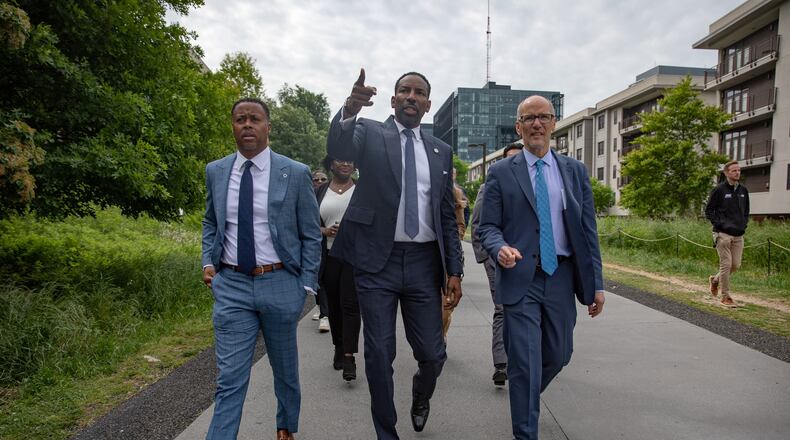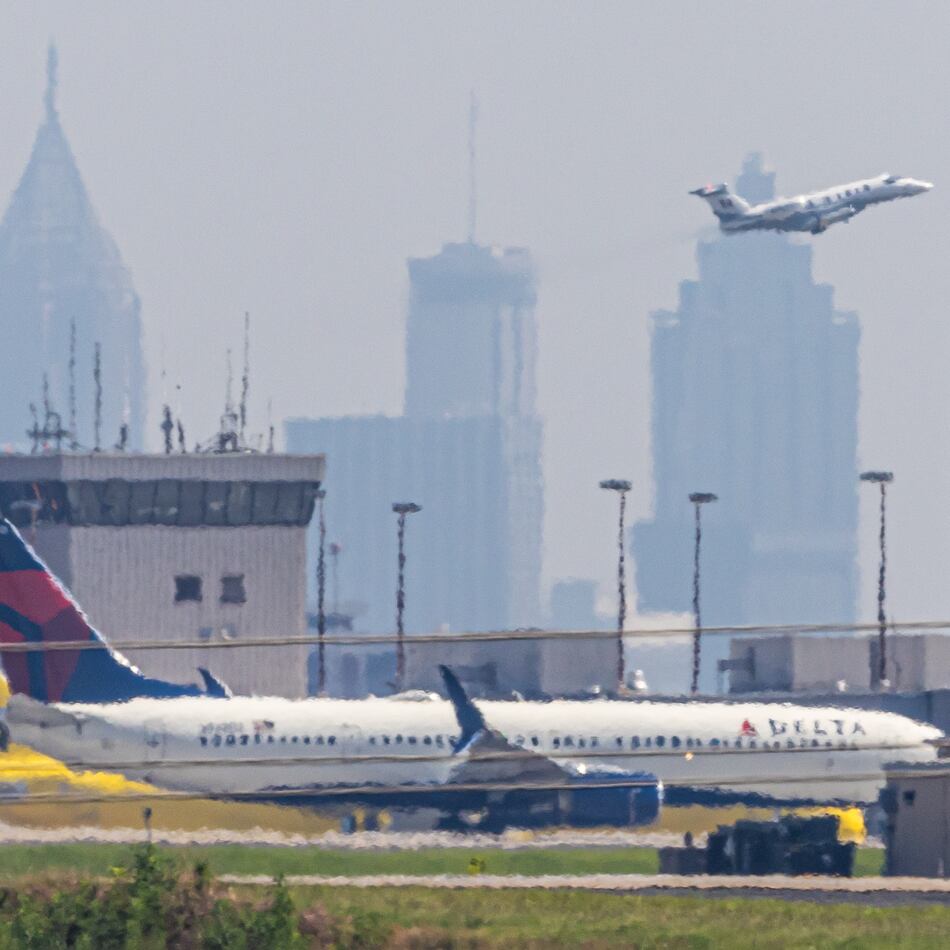Atlanta Beltline Inc. officials said Tuesday they are on course to surpass their affordable housing goals this year and delivered 269 more units over their 2024 target.
Overall, the Beltline wanted to reach a goal of 300 units last year but beat that with 569 units.
According to the agency overseeing the 22-mile loop around the city, the units are part of Mayor Andre Dickens’ larger push to preserve or create 20,000 affordable housing units in Atlanta by 2030.
The Beltline said its contribution is 5,600 units and that it is 74% toward a goal. Affordable housing is a central plank of Dickens’ priorities as he sets his sights on a reelection campaign in the final year of his first term.
“This work goes beyond numbers; it’s about creating opportunities for Atlantans to live, thrive and build generational wealth within Beltline communities,” Beltline President and CEO Clyde Higgs said in a statement.
Officials singled out several projects, including the Englewood housing development in the Chosewood Park neighborhood southeast of downtown, which includes 320 units of senior and multifamily housing; and 350 Chappell Road Trail, a 218-unit project near a segment of the Westside Trail.
In addition, the Beltline assisted in the acquisition of the historic Mall West End, a 12-acre site that the city intends to transform into a mixed-use development with affordable housing.
The housing developments included partnerships with Invest Atlanta, the city of Atlanta, the Atlanta Housing Authority, the Georgia Department of Community Affairs, the Development Authority of Fulton County and the Atlanta Urban Development Corp.
In an interview, Vice President of Housing Policy and Development Dennis Richards Jr. said the Beltline hoped to break ground this year on a “transit-oriented development” at 579 Garson Drive after the project won state Low-Income Housing Tax Credits for 130 units.
“We still have a lot of work to do. We have other land holdings, and we remain fully committed to plan and develop all of that property as well,” he said.
Credit: SPECIAL
Credit: SPECIAL
The Beltline said it had bought 87 acres of land for development, including a project adjacent to Pittsburgh Yards alongside the Southside Trail.
Another project is at Murphy Crossing. A deal with the Tempe, Arizona-based developer Culdesac Inc. to turn the 20-acre warehouse site into a walkable, mixed-income community with affordable housing unraveled late last year.
Earlier this month, the Beltline deflected criticism by pinning the blame on Culdesac for the collapse of the pending sale to the developer.
Richards told The Atlanta Journal-Constitution in February that Culdesac dramatically shifted the project’s scope, reducing by almost one-third the amount of affordable housing units for the first phase of development. He said the company also tried to offset risk by asking for about $38 million in funding across different phases of development.
Culdesac has pushed back strongly against the notion that it is responsible for the deal’s collapse. It has said it does not believe the Beltline had the right to end the purchase agreement.
Besides touting progress on affordable housing developments and land acquisitions, officials boasted about other Beltline achievements, including a property tax relief program called the Legacy Resident Retention Program for people living along the Beltline corridor.
Launched in 2020, the program offers tax relief to people who have owned their homes since at least March 2017. According to the Beltline, people who participate in the program have received an average of almost $2,200 in property tax relief and have seen their homes appreciate in value by roughly $50,000, on average.
Tanisha Corporal, a homeowner in South Atlanta, said she bought her home in 2009 for $125,000. She told the Beltline her home is now worth more than $350,000. The program helped her pay for her son’s college tuition and move forward with a career as a licensed social worker.
“Rising property taxes had me worried about losing everything I worked hard for,” she said in a statement. “The Legacy Resident Retention Program isn’t just helping me stay in my home — it’s preserving an asset I can pass down to my son while allowing me to remain part of a community I’ve helped build.”
Credit: Miguel Martinez-Jimenez
Credit: Miguel Martinez-Jimenez
About the Author
Keep Reading
The Latest
Featured





